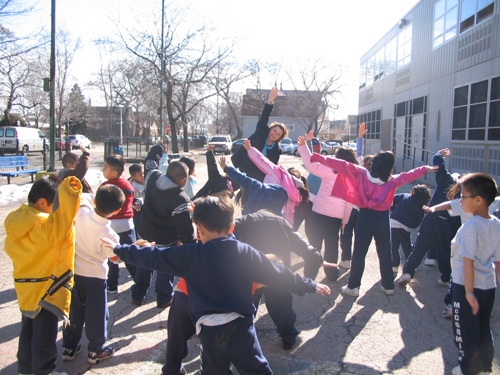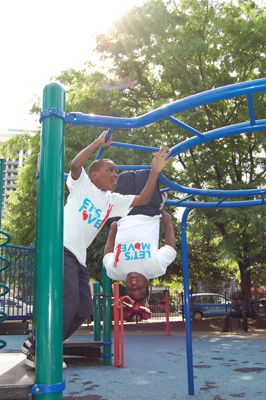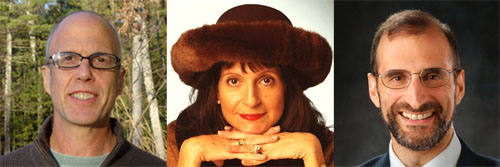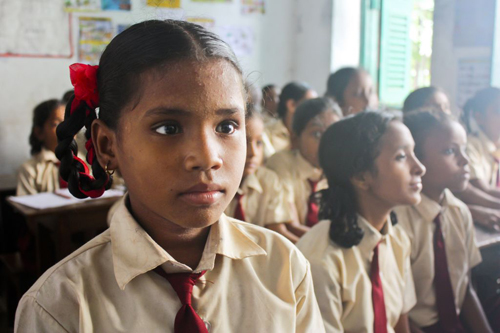
Problemi di salute studente mostrano un'influenza irresistibile ma generalmente trascurata sul divario di realizzazione interna degli Stati Uniti, secondo il Dott. Charles (Mandrino) Basch, autore di Gli studenti più sani sono migliori studenti. In Basch’s study he concludes that health issues, che sproporzionatamente peste a basso reddito i giovani delle minoranze urbano, svolgere un ruolo importante nel limitare la loro motivazione e la capacità di imparare.
Basch further believes that intervention would improve both educational and health outcomes. Currently there is no national American school mission or Department of Education initiative to reduce health disparities as part of a strategy to close our domestic achievement gap.
Dr. Howell Wechsler è direttore, Divisione di Adolescenza e Scuola Salute (DASH), Centri per la prevenzione e il controllo delle malattie (CDC). Il lavoro di Wechsler con DASH gli valse il Milton J. E. Senn Award 2006 dalla American Academy of Pediatrics per la realizzazione nel campo della salute della scuola. In 2012, è stato anche premiato con la più alta onorificenza della American School Salute Association, il William A. Howe Award.
Dr. Charles (Mandrino) E. Bash è il professor Richard March Hoe di educazione sanitaria presso Teachers College, Columbia University. Chuck has provided consultation related to implementing Gli studenti più sani sono migliori studenti ai dipartimenti statali di istruzione in Connecticut, Tennessee e Colorado, così come per i sistemi scolastici pubblici a Chicago, Boston, e Denver.

I worked on education initiatives in Africa and understand the important connection between healthcare and successful learning outcomes. First you must have healthy students. Then you can educate them — pensiamo come quello qui?
Howell: What I find fascinating is that when people who work on school health promotion across the world get together, we learn that things are not really all that different. It is perhaps a little more challenging in the United States because local control of education is so strong here. There are so many different places that you have to influence to get practices to change. We don’t do a very good job of getting people to think of the needs of the whole child. We train people in education. We train people in public health. But what is really needed here is a bridge or a mix between the two. That’s not something people do easily.
Quali questioni che interessano l'apprendimento avete individuato negli studenti e quale percentuale può essere trovato in case a basso reddito salute?
Mandrino: I identified seven. Poor vision, Asma scarsamente controllata, aggressività e violenza, inattività fisica, skipping breakfast and ADHD. These are not necessarily the ones that will be the most important in every locality, but they warrant consideration. Anche, mentre non espressamente indicato, mental and emotional health should be a pervasive underlying theme of any high quality school health initiative. Each of these 7 problemi riguarda o è interessato da salute mentale ed emotiva. Ulteriormente, ciascuno di questi problemi ha un'alta prevalenza e sproporzionatamente colpisce basso reddito, giovani delle minoranze urbano che è lo stesso gruppo fortemente influenzato dal divario rendimento scolastico.

Se riuscissimo a combattere i problemi di salute che hai identificato, quanto lontano potremmo andare verso restringendo il nostro divario di realizzazione domestico?
Mandrino: It is difficult to say exactly since a well-conceived effort has never been tried. But there is evidence that very substantive effect sizes can be achieved. Addressing these problems is not a panacea. We need effective teachers, curriculum di alta qualità, norme e valutazioni, and data systems to track and provide feedback about where progress is and is not being made. But no matter how well these school reforms are implemented, se gli studenti non sono motivati e in grado di imparare, the educational benefits of all of these efforts will be jeopardized. Altamente prevalente, problemi di salute specifici hanno effetti potenti sugli studenti’ la motivazione e la capacità di imparare, e non sono stati affrontati anche nelle scuole della nostra nazione.
I problemi di salute possono essere profonde barriere all'apprendimento, ma è il lavoro delle scuole per fornire servizi di assistenza sanitaria?
Howell: Most schools provide some kind of healthcare services to children through the presence of a school nurse; molti studenti di collegamento e le loro famiglie a fornitori di assistenza sanitaria su base comunitaria; e approssimativamente 2,000 le scuole negli Stati Uniti hanno centri di salute nelle scuole per fornire servizi di assistenza sanitaria almeno qualche critica necessarie per gli studenti nei campus.
Mandrino: Schools should not be the social institution that is solely or even predominantly responsible for providing healthcare services to youth. But given that schools are the social institution where youth are on a daily basis, sono l'ideale per fornire tali servizi, and are in a strong position to provide healthcare services to youth with great needs who are at high risk of not receiving needed services. Questo è, naturalmente, una domanda valore di carico di cui non è un “destra” risposta. There are many expectations on schools in addition to their primary goal — educazione dei giovani.
Sebbene le opinioni possono essere diversi a quello che le scuole dovrebbero o non dovrebbero richiamare l'attenzione, the reality is that certain health problems/issues pose powerful barriers to teaching and learning. These problems have persisted for decades and disproportionately affect low-income, urban minority youth. Education leaders and policy makers have not established strategic, alta qualità, e politiche e programmi ben coordinate per affrontare questi bisogni di salute e fino facciamo, i benefici di altre iniziative di riforma della scuola siano compromessi.

In caso contrario il lavoro delle scuole, il cui compito è la salute?
Mandrino: Fornire assistenza sanitaria e, ma ancora più importante, promoting wellness and quality of life is not the responsibility of any single social institution. Famiglie, comunità, istituzioni sanitarie, organizzazioni religiose, organizzazioni categoriali, agenzie governative, fondazioni e filantropi, e sì, scuole, all have an important role to play. And the problems are so large and so challenging among low-income youth that it will take contributions from all of these elements of our society to address these health needs in an efficient and timely way. What is currently lacking and sorely needed is coordination among the different entities investing in health promotion and disease prevention among youth.
Quale ruolo dovrebbero scuole svolgere nella promozione sanitaria?
Howell: Schools should work closely with health departments and local healthcare providers. Essi possono facilitare l'erogazione di servizi sanitari attraverso accordi con fornitori di servizi sanitari, gestire da soli, or link students and their families to community based providers. Schools also should teach students the knowledge and skills they need to effectively use healthcare services.

Cosa nazionale, stato, e strategie di riforma sanitaria locale vorresti vedere mettere in atto per garantire la salute degli studenti?
Mandrino: From my perspective, the question should be a bit broader. Part of a larger problem is that the problems of health disparities, disparità di istruzione e povertà sono strettamente collegati tra loro in modi causali, ma la nostra infrastruttura di vecchia data per affrontare questi problemi, e le politiche, programmi e finanziamenti ad essi associati, are disconnected in silos. This situation is not only pervasive in government, ma nel settore privato, nonché – si veda ad esempio la Fondazione Gates – educational investments are focused domestically and public health investments are focused globally. This is not, dal mio punto di vista, a good way to invest social resources to help youth facing many educational and health challenges simultaneously. To break out of a cycle of poverty, che è caratterizzata da elevato rischio intergenerazionale per insuccesso scolastico, problemi di salute, e basse possibilità di mobilità sociale ascendente, questi problemi interconnessi devono essere affrontate attraverso soluzioni tra loro collegati.
Quali iniziative sanitarie positive avete visto in tutto il paese che potrebbe ispirare maggiore attenzione per l'assistenza sanitaria se avessimo più fondi per le scuole a basso reddito?
Howell: Bene, there was a big increase a few years ago in funding for school based health centers and I think from a public health and education perspective that is a positive development. Tuttavia, the number of schools that have health centers still remains a small fraction of what the need is. There are a lot of efforts underway to develop linkages between schools and community health centers and other community healthcare providers knowing that sometimes it is just too challenging (ci sono barriere economiche, a volte) to actually open clinics on school sites. So there are efforts to build awareness for services that are available in the community and make them more accessible to students.

Immagina di avere il compito di advocacy per una migliore assistenza sanitaria per gli studenti poveri. Come si piantava?
Howell: There are multiple ways to go. Prima di tutto, the data and the evidence are growing and that would be important to stress. There is also a very strong common sense argument that obviously young people cannot achieve if they are burdened by health problems.
We are starting to make progress in expanding the evidence base. Per molti anni, quando la gente andava nelle scuole e ha fatto un intervento di formazione, they only looked at education outcomes and not health outcomes. People who were doing public health interventions in the schools just looked at the health outcomes but did not consider the education results. So that’s one of the main reasons it has taken so long for us to build a body of evidence.
Anche se CDC è una agenzia di sanità pubblica, abbiamo anche finanziamo agenzie educative. Most of the funding we give out goes to health departments but my division funds education agencies. In our core programs, for many years we have required the education agencies that we fund to collaborate with health departments. So if you were a state education agency and you wanted funding, doveva essere una partnership tra la salute e il dipartimento dell'istruzione e le risorse dovevano essere condivise.
It was a fascinating exercise trying to bridge these two worlds. We actually found that public health people were fairly ignorant about how to influence schools — e le scuole non sono state sempre chiare su come lavorare con i servizi sanitari — così abbiamo commissionato l'Associazione Nazionale dei Consigli di Stato di istruzione di scrivere un manuale e di sviluppare un programma di formazione chiamato “Come Scuole Lavoro e Come lavoro con le scuole.” After that we commissioned a public health organization called the National Association of Chronic Disease Directors to do the sequel, che era “Come Salute Dipartimenti di lavoro e come lavorare con i dipartimenti di salute.”
Getting people to cross sectors is a huge problem in this country. People need to look past the test scores or the easy and obvious solutions to dig down and look at the root causes that are really impeding academic achievement.

Foto per gentile concessione di campagna Scuole sano.
Campagna Scuole sano: Per ulteriori informazioni
Per ulteriori articoli della serie salute e istruzione: clicca qui
Nel Global Search per l'Educazione, unirsi a me e leader di pensiero di fama mondiale tra cui Sir Michael Barber (Regno Unito), Dr. Michael Block (Stati Uniti), Dr. Leon Botstein (Stati Uniti), Il professor Argilla Christensen (Stati Uniti), Dr. Linda di Darling-Hammond (Stati Uniti), Dr. Madhav Chavan (India), Il professor Michael Fullan (Canada), Il professor Howard Gardner (Stati Uniti), Il professor Andy Hargreaves (Stati Uniti), Il professor Yvonne Hellman (Paesi Bassi), Il professor Kristin Helstad (Norvegia), Jean Hendrickson (Stati Uniti), Il professor Rose Hipkins (Nuova Zelanda), Il professor Cornelia Hoogland (Canada), Onorevole Jeff Johnson (Canada), Sig.ra. Chantal Kaufmann (Belgio), Dr. Eija Kauppinen (Finlandia), Segretario di Stato Tapio Kosunen (Finlandia), Il professor Dominique Lafontaine (Belgio), Il professor Hugh Lauder (Regno Unito), Il professor Ben Levin (Canada), Signore Ken Macdonald (Regno Unito), Il professor Barry McGaw (Australia), Shiv Nadar (India), Il professor R. Natarajan (India), Dr. PAK NG (Singapore), Dr. Denise Papa (Stati Uniti), Sridhar Rajagopalan (India), Dr. Diane Ravitch (Stati Uniti), Richard Wilson Riley (Stati Uniti), Sir Ken Robinson (Regno Unito), Professor Pasi Sahlberg (Finlandia), Andreas Schleicher (PISA, OCSE), Dr. Anthony Seldon (Regno Unito), Dr. David Shaffer (Stati Uniti), Dr. Kirsten Immersive Are (Norvegia), Cancelliere Stephen Spahn (Stati Uniti), Yves Theze (French Lycee Stati Uniti), Il professor Charles Ungerleider (Canada), Il professor Tony Wagner (Stati Uniti), Sir David Watson (Regno Unito), Professor Dylan Wiliam (Regno Unito), Dr. Mark Wormald (Regno Unito), Il professor Theo Wubbels (Paesi Bassi), Il professor Michael Young (Regno Unito), e il professor Zhang Minxuan (Porcellana) mentre esplorano le grandi questioni educative immagine che tutte le nazioni devono affrontare oggi. Il Global Ricerca per l'Educazione della Comunità Pagina
C. M. Rubin è l'autore di due ampiamente lettura serie on-line per il quale ha ricevuto una 2011 Premio Upton Sinclair, “Il Global Ricerca per l'Educazione” e “Come faremo a Leggere?” Lei è anche l'autore di tre libri bestseller, Compreso The Real Alice in Wonderland.
Segui C. M. Rubin su Twitter: www.twitter.com/@cmrubinworld






Commenti recenti